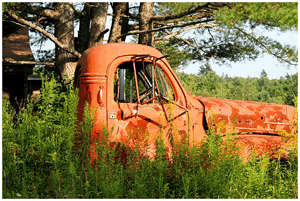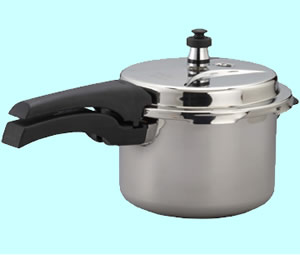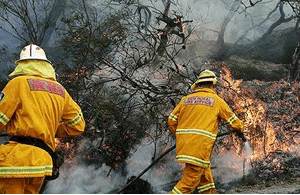
For a chemical reaction to occur, reactant particles must collide with sufficient energy to break chemical bonds. This energy is known as the activation energy for the particular reaction. This way of looking at chemical reactions is known as the collision theory. The rate of a chemical reaction or the rate of collisions amongst reactant particles can be increased in four main ways as listed below.
1) Introducing a catalyst.
Click for more information.
2) Increasing the concentration of the reactants or the pressure of gaseous reactants.
Experiment- Activity
to measure the effect concentration has on the rate of reaction of CaCO3 with HCl
Click for more information.
3) increasing the temperature of the reactants which serves to increase the average kinetic energy of the reactant particles and therefore increase the frequency of successful collision. Click for some exercises with average kinetic energy.
Some everyday examples of this include firefighting and cooking.
Pressure cookers, top right, are used to cook food at temperatures above 100 oC. Food cooks quickly at such high temperatures as the rate of reaction increases.
Fire fighters use water to cool burning wood and therefore reduce the rate of combustion.


4) increasing the surface area of solid reactants.
Experiment- Activity
to measure the effect surface area has on the rate of reaction of CaCO3 with HCl
Click for more information
Click to see a visual explanation
The oxidising reaction between oxygen and iron takes place normally at a slow rate. The reaction can be significantly increased by placing hot steel wool in a gas jar containing pure oxygen gas, as shown on the right
Explain how the surface area and concentration of reactants has caused the reaction to proceed at such a rapid rate.
Why is it necessary to heat
the steel wool first?
Why does an equivalent mass of solid iron not react the same way?
4) What effect would using powdered magnesium instead of ribbon have on the rate of reaction between the metal and hydrochloric acid?
8) Consider the reaction between copper metal and nitric acid. In the video on the right copper metal is dissolved in nitric acid. Water is then added to the reaction mixture.
With reference to the video explain the relationship between concentration and rate of reaction.
What happens to the number of fruitful collisions as the concentration of the reactants is decreased? Explain.